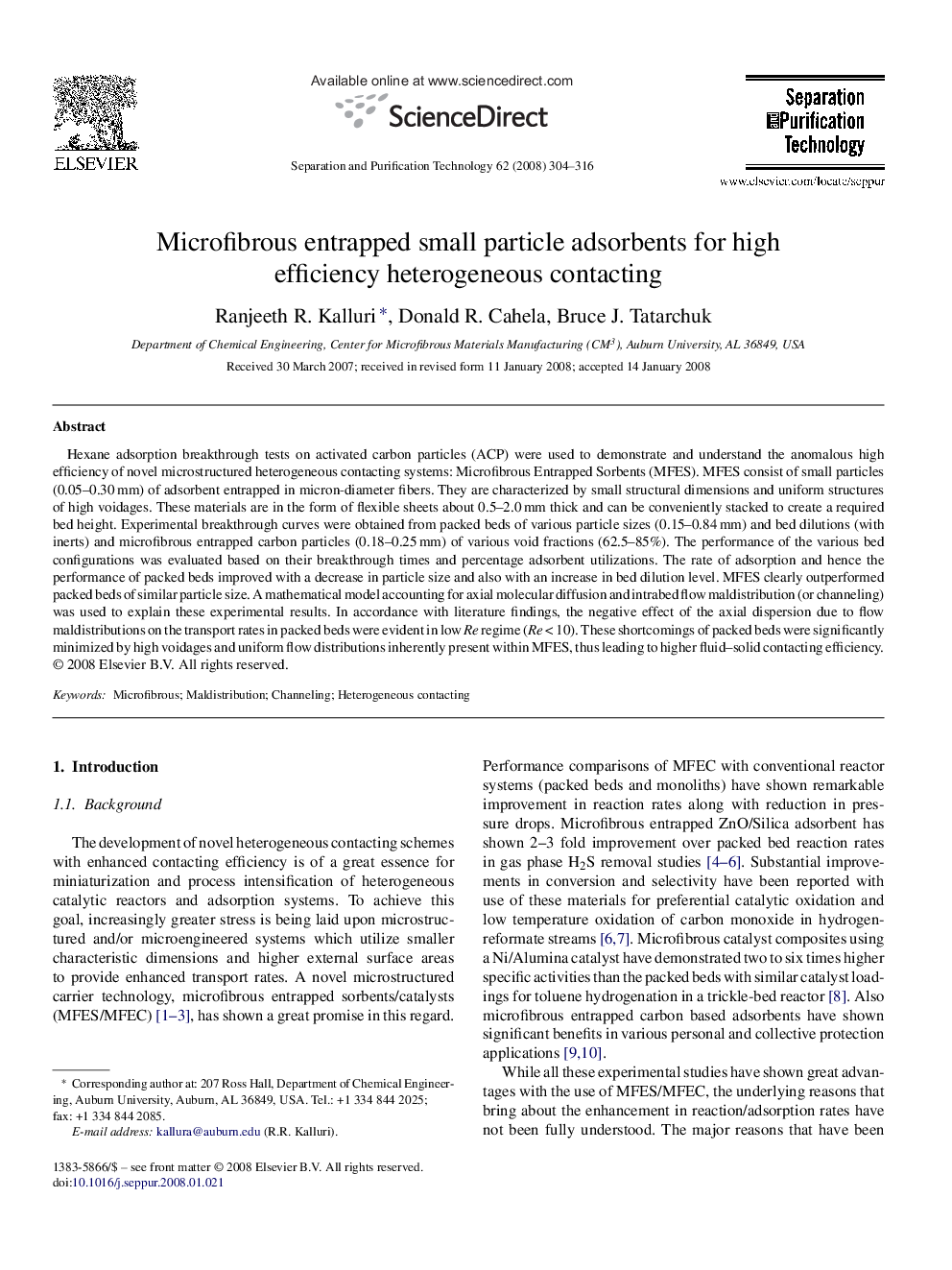| Article ID | Journal | Published Year | Pages | File Type |
|---|---|---|---|---|
| 643159 | Separation and Purification Technology | 2008 | 13 Pages |
Hexane adsorption breakthrough tests on activated carbon particles (ACP) were used to demonstrate and understand the anomalous high efficiency of novel microstructured heterogeneous contacting systems: Microfibrous Entrapped Sorbents (MFES). MFES consist of small particles (0.05–0.30 mm) of adsorbent entrapped in micron-diameter fibers. They are characterized by small structural dimensions and uniform structures of high voidages. These materials are in the form of flexible sheets about 0.5–2.0 mm thick and can be conveniently stacked to create a required bed height. Experimental breakthrough curves were obtained from packed beds of various particle sizes (0.15–0.84 mm) and bed dilutions (with inerts) and microfibrous entrapped carbon particles (0.18–0.25 mm) of various void fractions (62.5–85%). The performance of the various bed configurations was evaluated based on their breakthrough times and percentage adsorbent utilizations. The rate of adsorption and hence the performance of packed beds improved with a decrease in particle size and also with an increase in bed dilution level. MFES clearly outperformed packed beds of similar particle size. A mathematical model accounting for axial molecular diffusion and intrabed flow maldistribution (or channeling) was used to explain these experimental results. In accordance with literature findings, the negative effect of the axial dispersion due to flow maldistributions on the transport rates in packed beds were evident in low Re regime (Re < 10). These shortcomings of packed beds were significantly minimized by high voidages and uniform flow distributions inherently present within MFES, thus leading to higher fluid–solid contacting efficiency.
